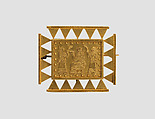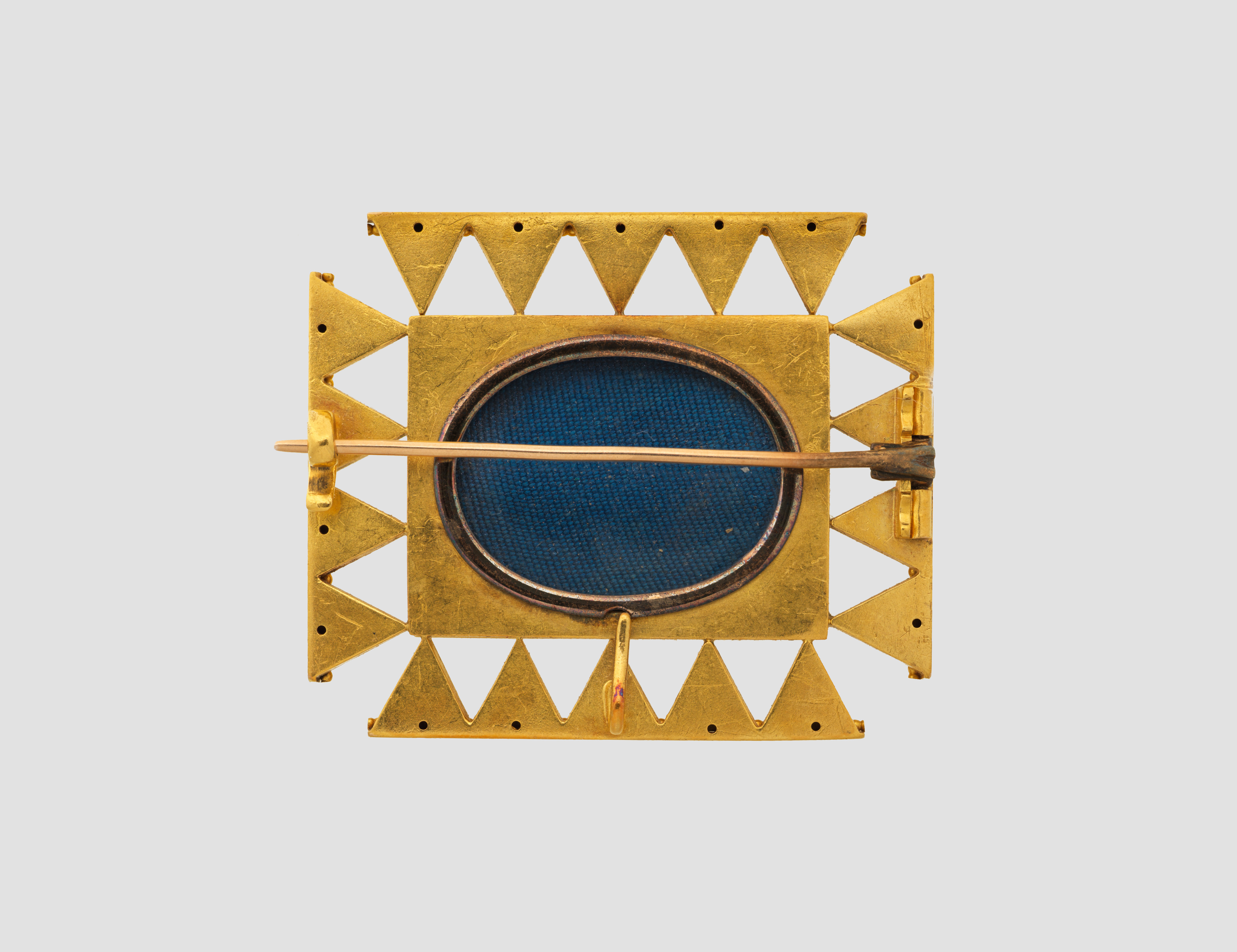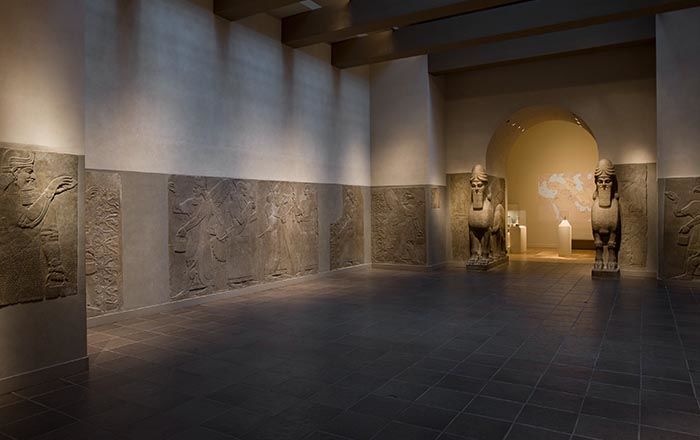Brooch with Assyrian-inspired design
Not on view
Following the excavation of Assyrian palaces in the mid-nineteenth century, ancient Mesopotamian imagery began to be used in European decorative arts, including jewelry and ceramics. Publicity in the form of news coverage and popular books around the excavations, removal of many sculptures from sites in northern Iraq to England and France, and public spectacles such as the reconstructed ‘Nineveh Court’ in the Crystal Palace at Sydenham, London, fostered a fascination with Assyria and Assyrian art among the Victorian public.
The design on this brooch is closely based on a relief from the Northwest Palace of Ashurnasirpal II (r. ca. 883–859 BCE). The king, flanked by attendants holding fly-whisks and carrying his bow, quiver, and sword, sits on an elaborate stool and holds a wine bowl. The reverse of the brooch has a glass-fronted compartment for holding miniature portraits or other keepsakes, now empty.
This image cannot be enlarged, viewed at full screen, or downloaded.
This artwork is meant to be viewed from right to left. Scroll left to view more.



